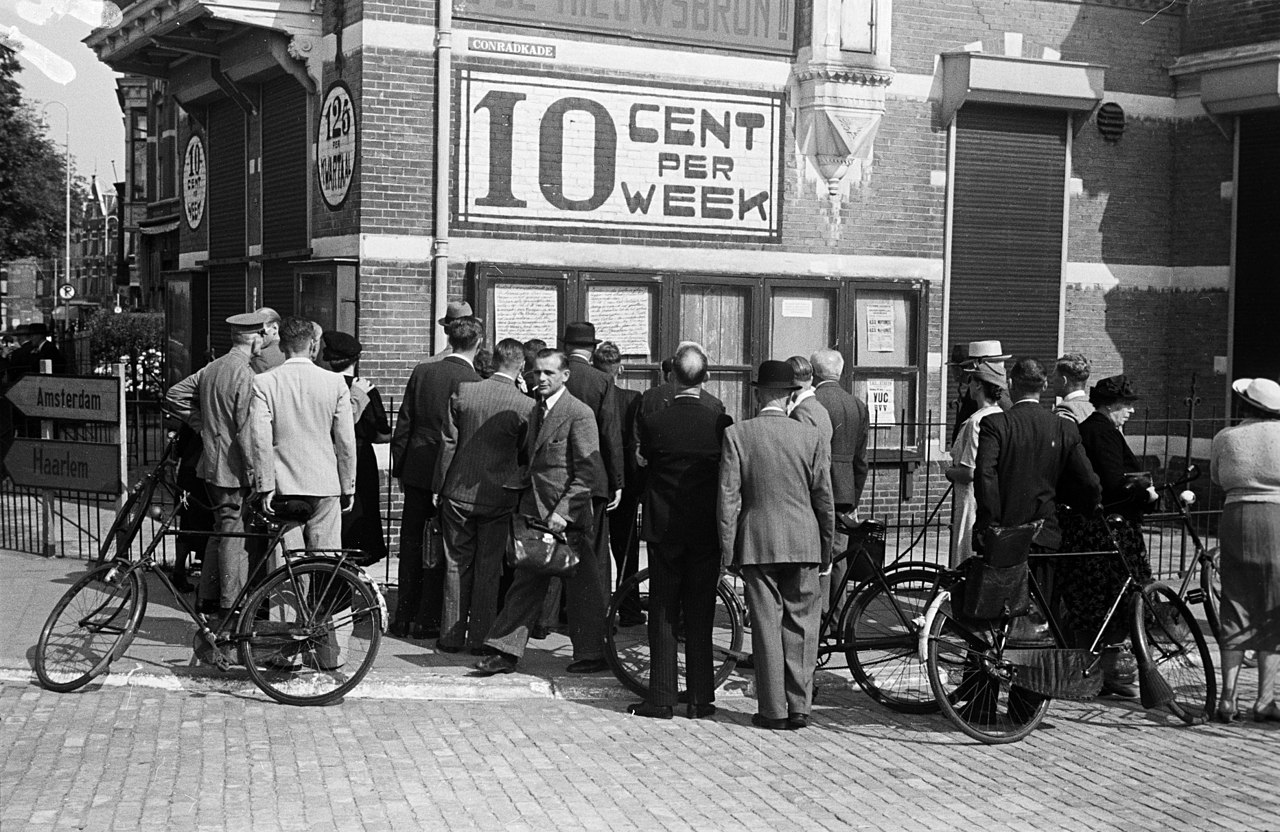Iconic illegal photos made during World War II get Unesco status

A collection of 8,000 photographs made illegally by a collective of Amsterdam photographers during World War II has been added to the Unesco Netherlands Memory of the World Register.
The collective consisted of a core group of 14 photographers who called themselves the Ondergedoken Camera (the underground camera) and who aimed to record the consequences of the German occupation.
Helped by amateur photographers, couriers, and other resistance members, they set out to photograph illegal weapon transports, sabotage actions, people who were hiding from the Germans, and people manning the illegal press and forging identity cards.
They also went out into the streets to photograph the harrowing consequences of the hunger winter in the last year of the war.
“The photographs were made surreptitiously, with the camera hidden underneath a coat or in a bike bag, “ curator Claartje van Dijk of the FOAM museum of photography told broadcaster NOS . The museum will shortly be hosting an exhibition of the most iconic of the photos.
“They were mostly made with a Rolleiflex camera, which you look down into instead of holding it up to your face. Because the photos were often made in seconds and in secret, they are often blurred and with a crooked horizon.
The photographs at the museum include an image of a stick-thin boy holding a pan on his way to a soup kitchen, made by Emmy Andriesse during the hunger winter of 1944-45.
Cas Oorthuys photographed people returning from the country where they had been asking farmers for food in exchange for goods. He also recorded the dead bodies of famine victims as they were laid out without a coffin in Amsterdam’s Zuiderkerk.
Some of the group were also present when the Germans opened fire from the Groote Club on people celebrating the liberation on Dam square on May 7, killing 32.
Apart from creating a record for the future, the photos were also meant to show the Dutch government in London that people needed help badly. “The resistance used them to raise the alarm,” Van Dijk said.
The photos offer a “unique and trenchant insight” into World War II, a Unesco spokesman said.
Thank you for donating to DutchNews.nl.
We could not provide the Dutch News service, and keep it free of charge, without the generous support of our readers. Your donations allow us to report on issues you tell us matter, and provide you with a summary of the most important Dutch news each day.
Make a donation